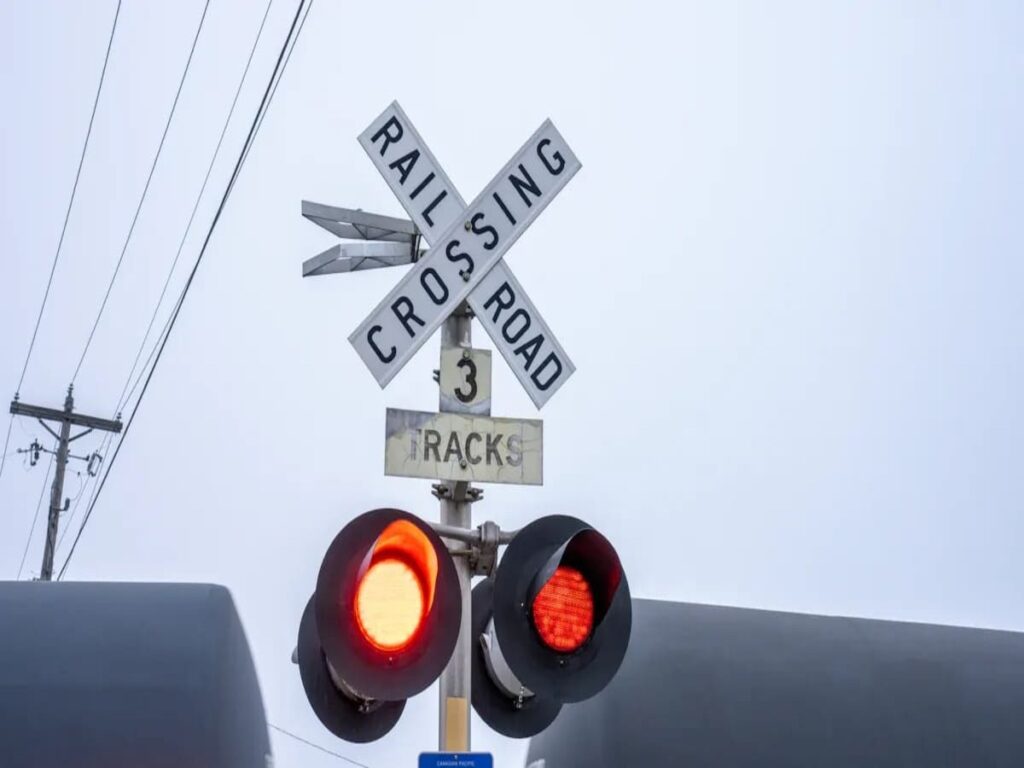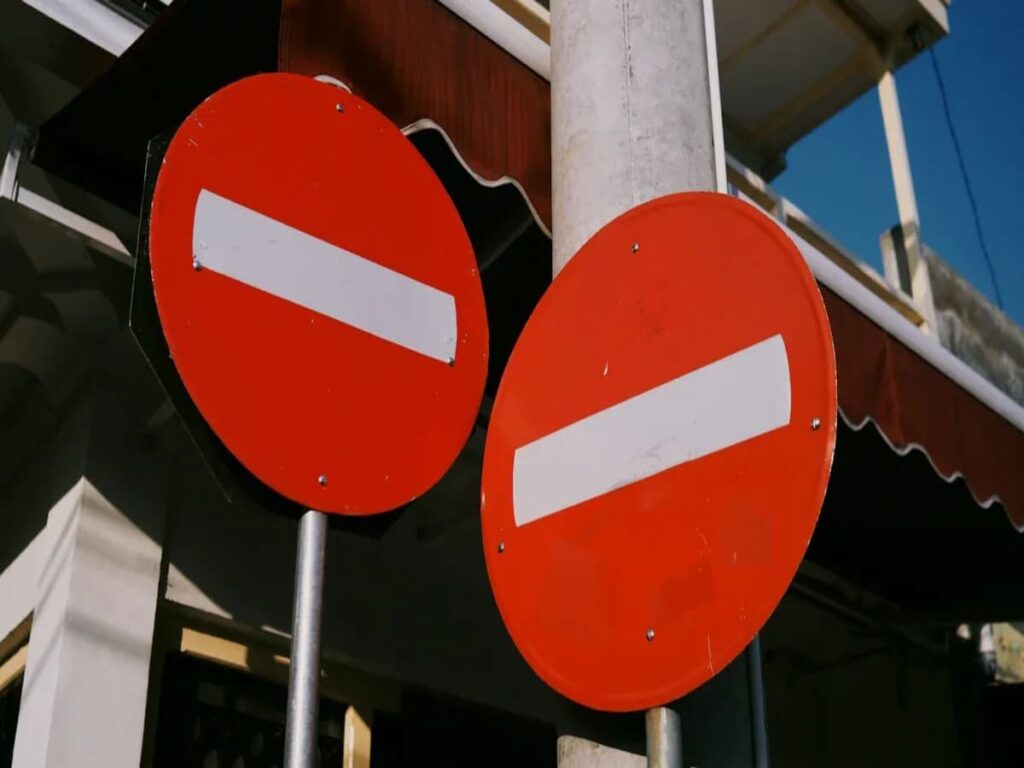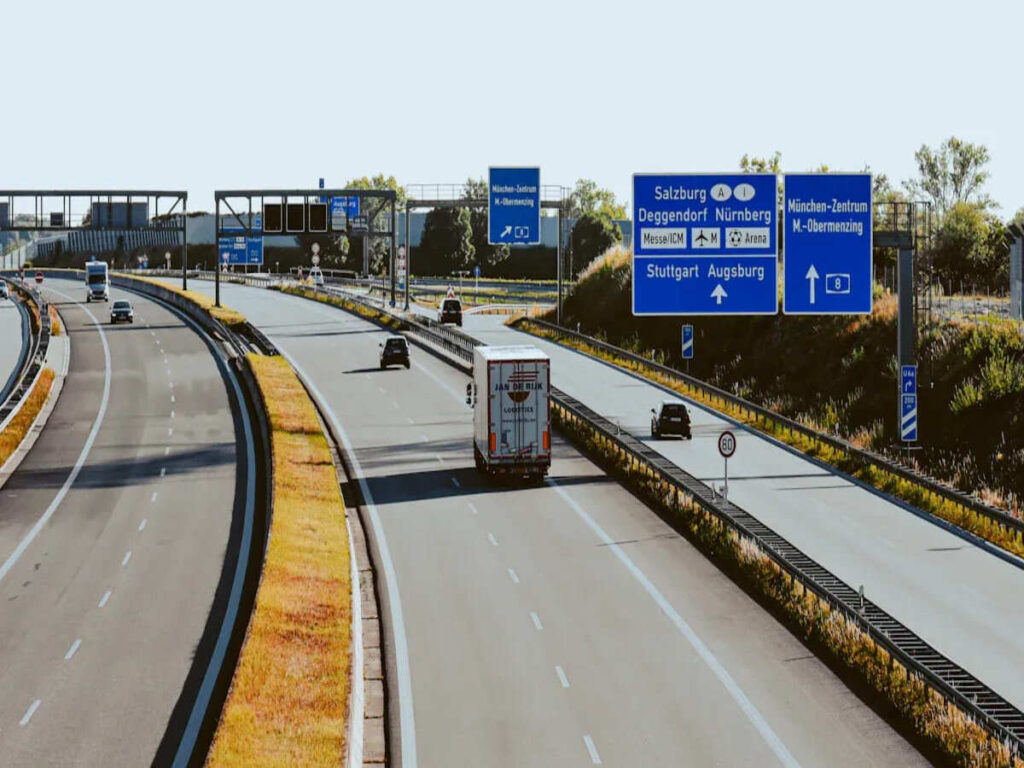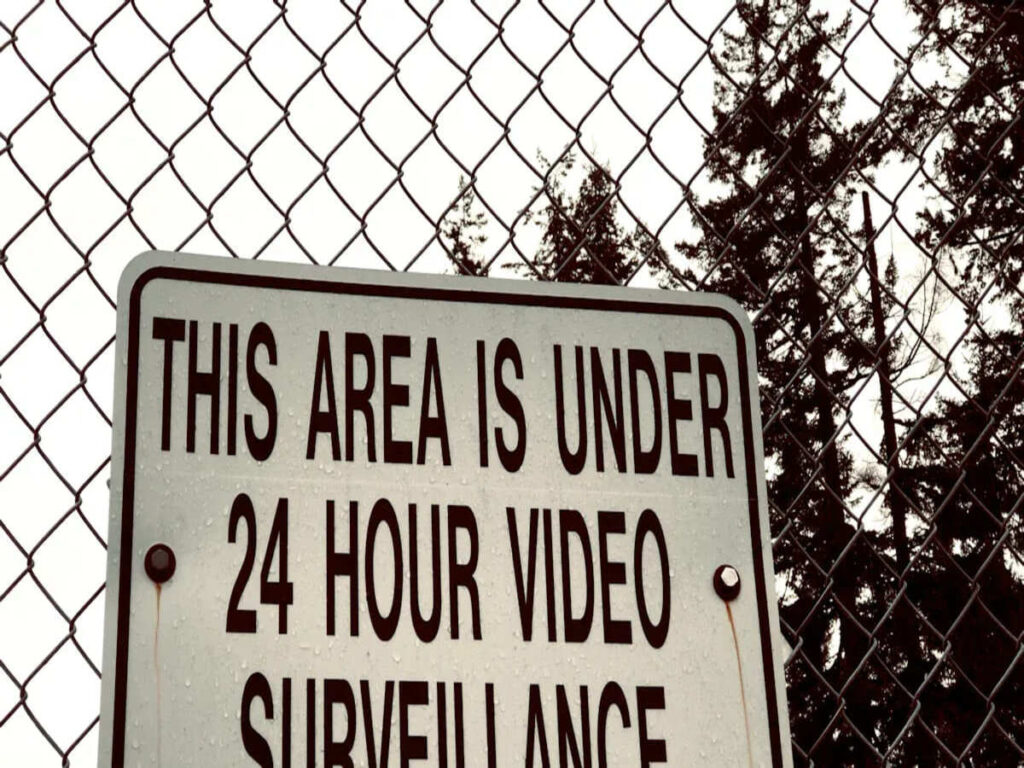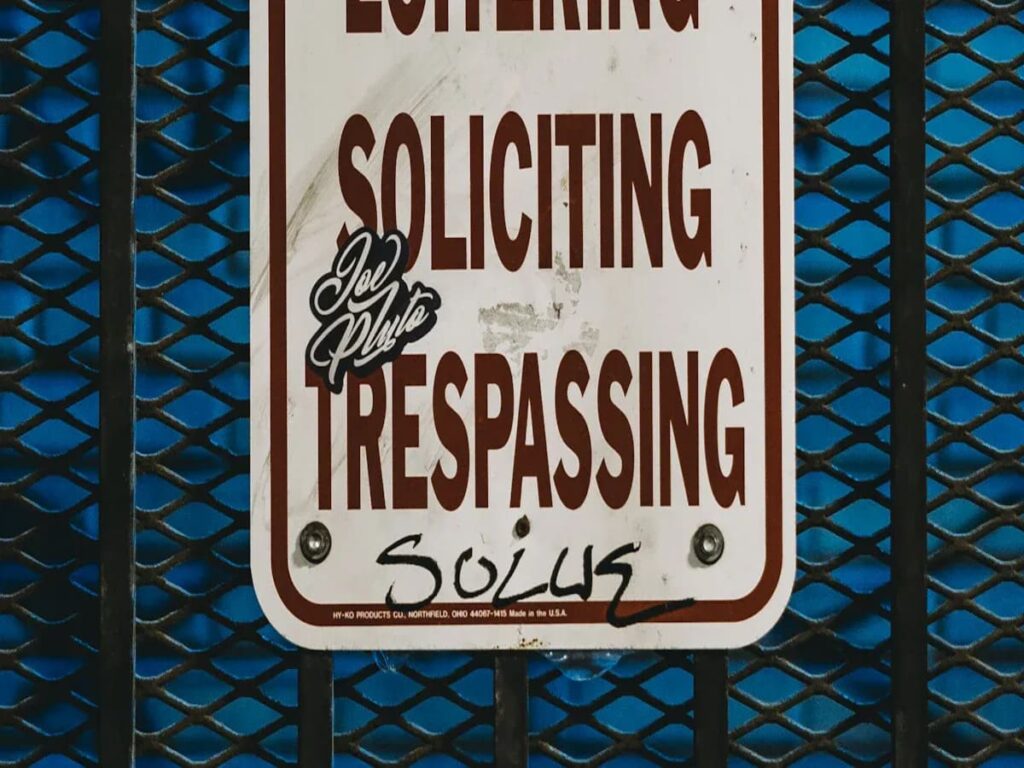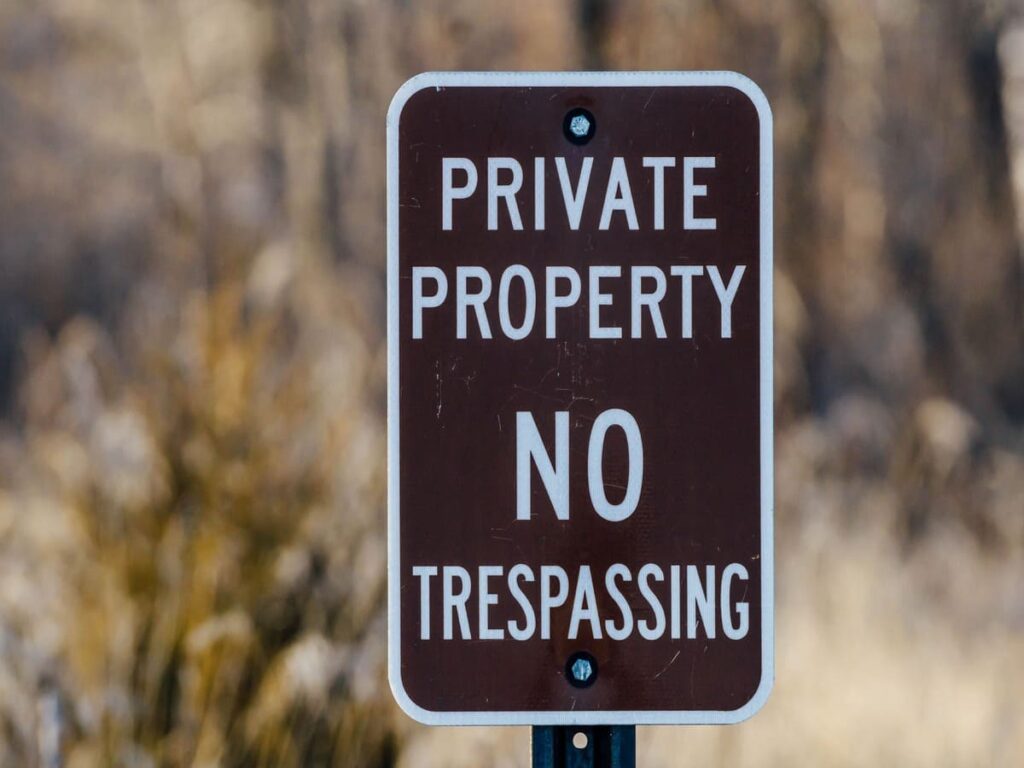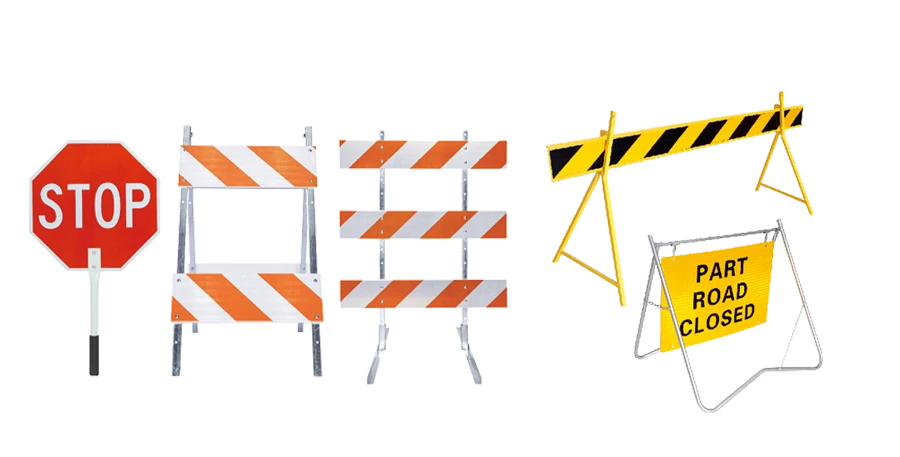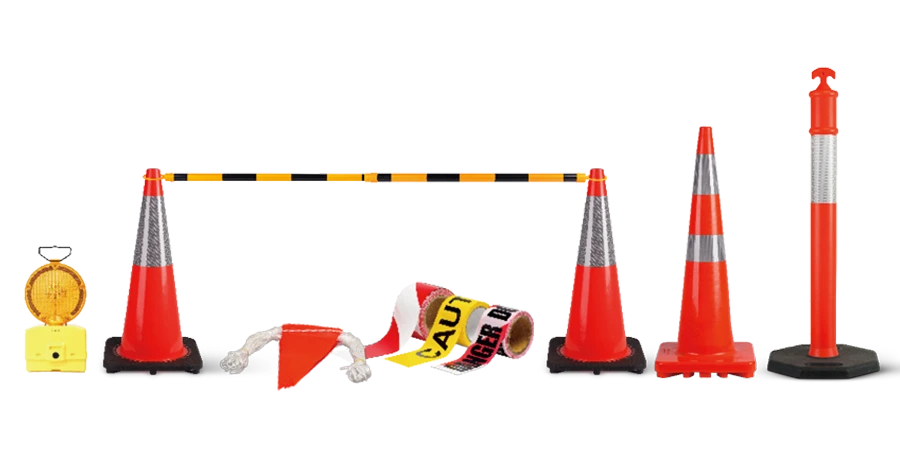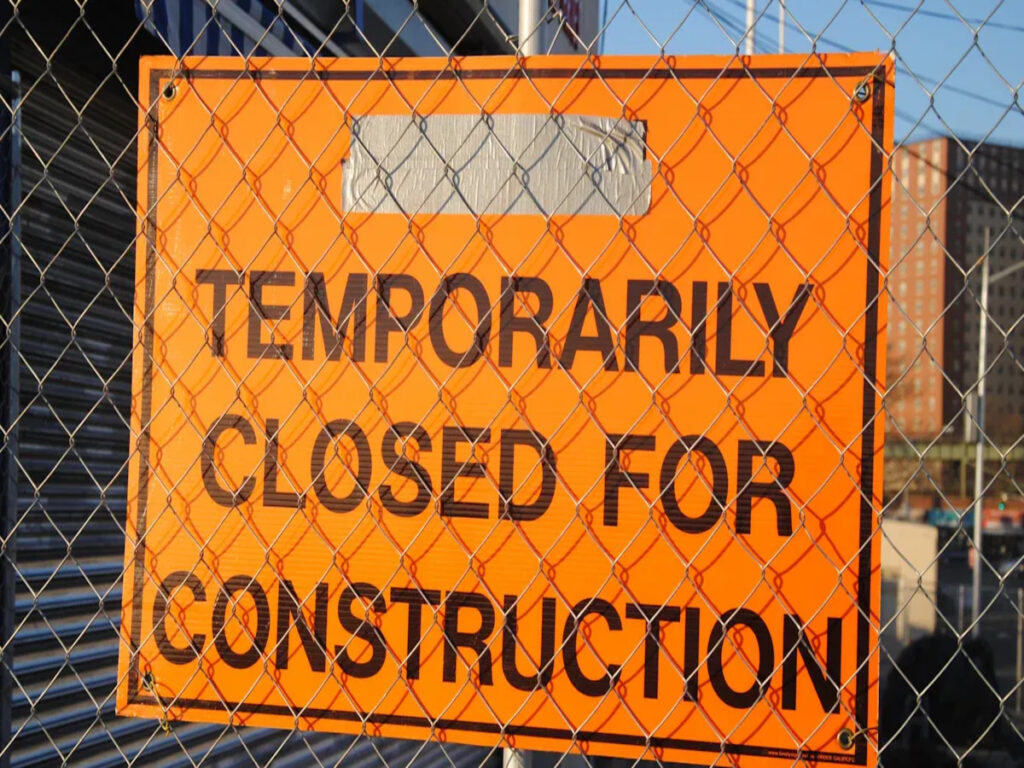
إذا كنت تستخدم علامات حركة البناء المؤقتة أو الدائمة في منطقة البناء الخاصة بك? يعتمد الخيار الأفضل على مدة مشروعك, كم مرة تتغير أنماط حركة المرور, ومستوى السلامة المطلوب. يجب أن يمتثل كلا النوعين من علامات حركة البناء للوائح الحكومية الصارمة. ويسلط الجدول أدناه الضوء على الاختلافات في هذه القواعد:
| وجه | علامات مؤقتة | علامات دائمة |
|---|---|---|
| إذن | يجب أن توافق الهيئة العامة | تم تثبيته من قبل السلطة الدائمة |
| امتثال | يجب أن يتبع MUTCD التحكم في حركة المرور المؤقتة | يجب الالتزام بقواعد التوقيع الدائم MUTCD |
| مدة الاستخدام | تستخدم فقط خلال مشروع البناء | مخصص للاستخدام على المدى الطويل |
عند اختيار إشارات المرور البناء, النظر في السلامة, الامتثال التنظيمي, والتكلفة لضمان الإدارة الفعالة لحركة المرور في منطقة البناء الخاصة بك.
في أوبترافيك, نحن نقدم مجموعة واسعة من البناء عالي الجودة إشارات المرور مصممة لتلبية معايير السلامة والمتطلبات التنظيمية. تم تصميم علاماتنا لتعزيز الرؤية, ضمان تدفق حركة المرور بشكل سلس وآمن في مواقع البناء الخاصة بك. استكشف مجموعتنا اليوم للعثور على العلامات المناسبة لمشروعك.
علامات المرور البناء في مناطق العمل
لماذا تعتبر اللافتات مهمة؟
هناك العديد من المخاطر في منطقة البناء. قد لا يعرف السائقون تغيير المسار أو السرعات البطيئة. قد لا يتوقعون العمال على الطريق. تساعد إشارات المرور الخاصة بالبناء من خلال إعطاء تحذيرات وتوجيهات واضحة. تخبر العلامات الصحيحة السائقين بما يجب عليهم فعله قبل وصولهم إلى منطقة العمل.
العلامات التي يسهل رؤيتها توقف الارتباك والتحركات السريعة. يمكن للسائقين الذين يرون التحذيرات مبكرًا أن يبطئوا السرعة ويتبعوا مسارات جديدة بأمان. وهذا يساعد على وقف الحوادث ويحافظ على سلامة العمال والسائقين.
ستلاحظ وجود العديد من أجهزة التحكم في حركة المرور في مناطق العمل. وتشمل هذه:
- العلامات التنظيمية, مثل حدود السرعة والطرق الالتفافية
- علامات التحذير, مثل "العمال في المقدمة" أو "الطريق الوعرة"
- علامات إرشادية توضح للسائقين أين يتجهون أثناء التحويلات
- المخاريط, الطبول, وحواجز لتحديد الممرات والمخاطر
- لوحات الأسهم والأضواء الساطعة لمساعدة السائقين على الرؤية بشكل أفضل
- محطات الراية مع مجاذيف التوقف/البطء والملابس اللامعة
تظهر الأبحاث الحديثة أن العلامات الديناميكية وعلامات إنفاذ السرعة تساعد على إبطاء سرعة السيارات. يتم استخدام العلامات التحذيرية البرتقالية ذات الأسطح العاكسة بشكل أكبر وتعمل بشكل أفضل في مناطق البناء.
الأهداف الرئيسية للسلامة
الهدف الرئيسي من إشارات المرور الخاصة بالبناء هو الحفاظ على سلامة الجميع. تريد مساعدة السائقين على التحرك بأمان, تجنب الارتباك, ووقف الأعطال. تساعدك علامات السلامة المرورية الجيدة على تحقيق أهداف السلامة هذه:
- تحذير السائقين من المخاطر والعمال القريبين
- اجعل العلامات سهلة الرؤية, حتى في الليل أو في الطقس السيئ
- إعطاء توجيهات واضحة لتوجيه حركة المرور عبر المنطقة أو حولها
- تأكد من اتباع قواعد مثل MUTCD
- التحكم في السرعة وتنظيم حركة المرور لحماية العمال والأشخاص
- ساعد السائقين على ملاحظة التغييرات وتجنب التبديل المفاجئ للمسارات
تستخدم خطط التحكم في حركة المرور العلامات, المخاريط, والحواجز التي لإبقاء السيارات تتحرك بأمان. عند استخدام إشارات المرور الخاصة بالبناء بالطريقة الصحيحة, أنت تساعد في وقف الحوادث وجعل المنطقة أكثر أمانًا للجميع.
إشارات المرور المؤقتة
التعريف والغرض
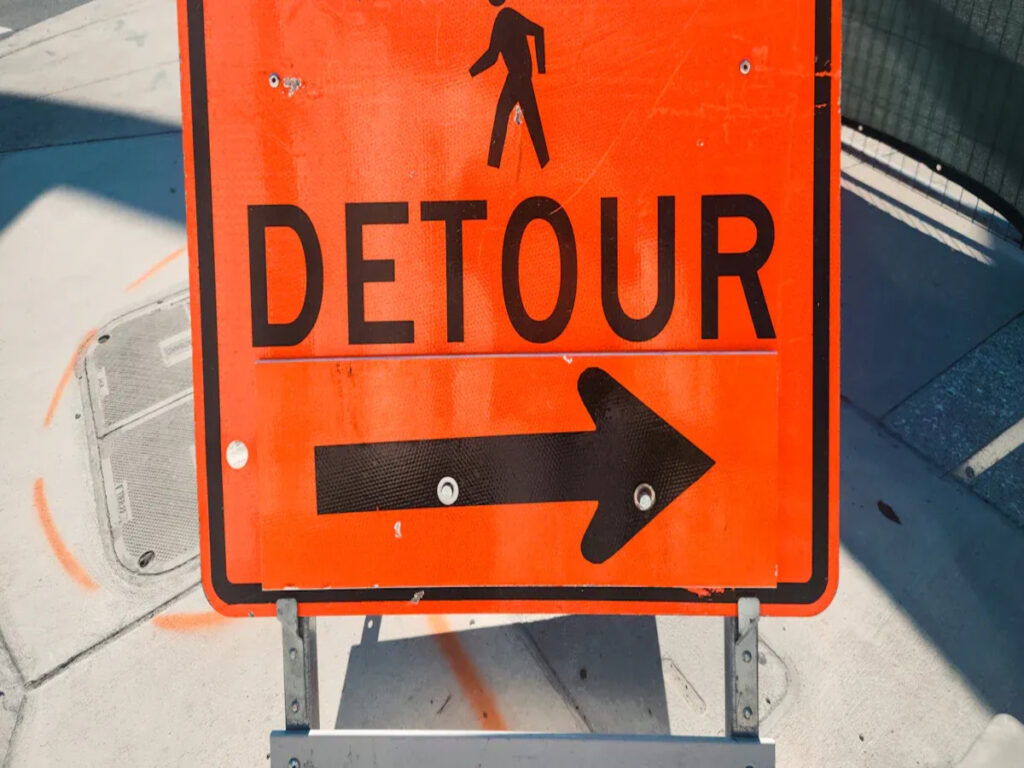
تساعد إشارات المرور المؤقتة في التحكم في الطرق أثناء البناء. هذه العلامات ترشد السائقين وتحافظ على سلامة العمال. يحذرون من المخاطر ويظهرون طرقًا جديدة للذهاب. الهدف الرئيسي هو مساعدة الجميع بالقرب من مناطق العمل على البقاء آمنًا. يمكنك تحريك هذه العلامات عندما يتغير مشروعك.
الأنواع والاستخدامات الشائعة
هناك أنواع كثيرة من العلامات المؤقتة في مناطق البناء. كل واحد لديه وظيفة خاصة:
- لوحات الأسهم: قم بتوجيه السائقين حول مناطق العمل وتحذيرهم مبكرًا.
- علامات الرسالة: إظهار الرسائل الخاصة أو التحذيرات. يمكنك نقلها لأنها على مقطورات أو شاحنات.
- علامات السلامة: ذكّر العمال باتباع قواعد السلامة, مثل ارتداء الخوذات.
- علامات المرور: تحذير السائقين والأشخاص الذين يسيرون حول المخاطر أو الاتجاهات الجديدة.
- توجيه الأجهزة: مساعدة السيارات على التحرك بأمان. وتشمل هذه:
- المخاريط المرورية: حدد الممرات وساعد السائقين على الرؤية بشكل أفضل.
- طبول المرور: تستخدم للمهام الطويلة وتكون آمنة في حالة تعرضها للضرب.
- لوحات رأسية: أظهر الطريق الذي يجب أن تسلكه السيارات.
- علامات أنبوبية: تناسب المساحات الصغيرة وتبقى ثابتة مع الأوزان.
نصيحة: ضع علامات تحذيرية, يحب “أعمال الطريق المقبلة,” قبل منطقة العمل. وهذا يمنح السائقين الوقت الكافي لإبطاء السرعة والاستعداد.
المتطلبات التنظيمية
يجب عليك اتباع قواعد صارمة لإشارات مرور البناء المؤقتة. ويجب أن تبدو هذه العلامات كعلامات دائمة اللون, شكل, ومدى سهولة قراءتها. ضع اللافتات على الدعامات الآمنة, وتأكد من وجود العلامات الكبيرة على الأقل 7 أقدام عالية. حافظ على العلامات نظيفة وسهلة الرؤية. إذا كان من الصعب قراءة علامة, تغييره على الفور. قم دائمًا بتغطية أو إزالة العلامات الدائمة إذا كانت القواعد المؤقتة مختلفة. يجب أن تتبع جميع العلامات الفيدرالية قواعد MUTCD والقوانين المحلية.
إيجابيات وسلبيات
فيما يلي نظرة سريعة على النقاط الجيدة والسيئة الرئيسية لإشارات المرور المؤقتة:
| المزايا | عيوب |
|---|---|
| من السهل التغيير لتخطيطات الطريق الجديدة | بحاجة إلى رعاية منتظمة |
| سريع في الرفع والتحرك | قد تحتاج إلى تصاريح والتخطيط |
| توفير المال للوظائف القصيرة | يمكن أن ينكسر إذا لم يتم التحقق منه |
| جعل الطرق أكثر أمانا مع وجود علامات واضحة | يحتاج البعض إلى عمال مدربين |
| استخدم طاقة أقل | يمكن أن تكون الطاقة مشكلة في الأحوال الجوية السيئة |
علامات المرور الدائمة
التعريف والغرض
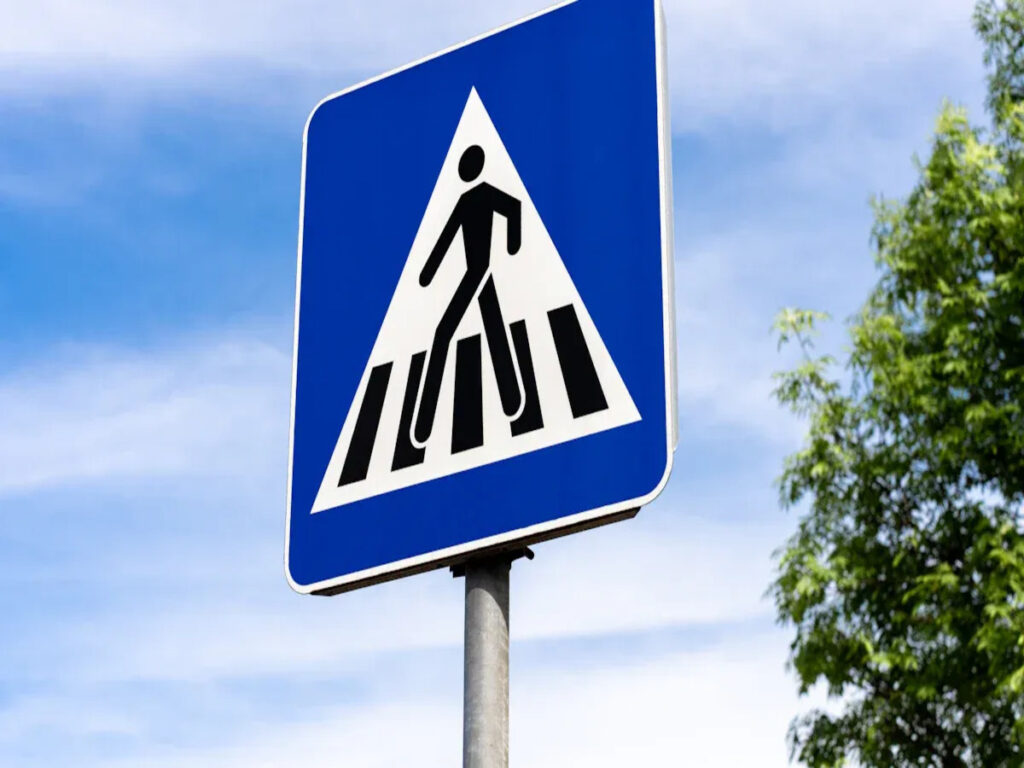
تساعد إشارات المرور الدائمة في التحكم بالطرق لفترة طويلة. يمكنك استخدام هذه العلامات بعد الانتهاء من البناء. إنهم يرشدون السائقين ويساعدون في التحكم في السرعة. تساعد هذه العلامات في الحفاظ على سلامة الجميع كل يوم. تبقى العلامات الدائمة في مكان واحد لسنوات عديدة. تراهم عند التقاطعات, الطرق السريعة, والمناطق المدرسية. يخبرون السائقين بما يجب عليهم فعله وإلى أين يذهبون.
الأنواع والاستخدامات الشائعة
يمكنك العثور على علامات دائمة مختلفة في مناطق البناء وعلى الطرق الجاهزة:
- توقف العلامات: اطلب من السائقين التوقف عند التقاطعات.
- علامات حد السرعة: إظهار السرعة الآمنة لكل طريق.
- علامات العائد: أخبر السائقين متى يسمحون للآخرين بالذهاب أولاً.
- دليل العلامات: مساعدة السائقين في العثور على مخارج, أسماء الشوارع, والاتجاهات.
- العلامات التنظيمية: عرض القواعد مثل “ممنوع الوقوف” أو “طريقة واحدة.”
تساعد هذه العلامات حركة المرور على التحرك بأمان وتساعدك على اتباع القانون.
المتانة والمعايير
يجب أن تستمر العلامات الدائمة لفترة طويلة وأن تكون سهلة الرؤية. يجب عليك استخدام مواد قوية واتباع قواعد صارمة:
- الألومنيوم هي أفضل المواد. لا تصدأ وتدوم لسنوات عديدة.
- تحتاج اللافتات إلى صفائح عاكسة للضوء تتوافق مع معايير ASTM D4956-09.
- ال Mutcd لديه قواعد لكيفية ظهور العلامات الساطعة والمرئية. صفائح درجة أعلى (الأنواع الثانية, ثالثا, رابعا, الثامن, تاسعا, الحادي عشر) يعمل بشكل أفضل ويدوم لفترة أطول.
- يجب على الوكالات التحقق من العلامات بشكل متكرر واستبدالها إذا تلاشت.
- تضمن هذه القواعد أن إشارات المرور الخاصة بالبناء آمنة وسهلة الرؤية في جميع الأحوال الجوية.
نصيحة: تحقق من علاماتك كثيرًا للحفاظ عليها آمنة واتباع القواعد.
إيجابيات وسلبيات
فيما يلي نظرة سريعة على النقاط الجيدة والسيئة الرئيسية لإشارات المرور الدائمة:
| وجه | إيجابيات | سلبيات |
|---|---|---|
| متانة | مصنوع للاستخدام طويل الأمد; يتحمل الطقس والاستخدام الكثيف | يكلف أكثر في البداية |
| مصداقية | يعطي إدارة حركة المرور ثابتة في مكان واحد | ليس من السهل التحرك أو التغيير |
| صيانة | يحتاج إلى رعاية قليلة | من الصعب وضعه أو إخراجه |
| طلب | عظيم للتقاطعات, الطرق السريعة, المناطق المدرسية | ليست جيدة للأماكن التي تتغير فيها حركة المرور كثيرًا |
- إيجابيات:
- تستمر العلامات لسنوات عديدة ولا تتلاشى أو تتقشر.
- يمكنك توفير الوقت والمال لأنك لا تستبدلهما كثيرًا.
- تساعدك العلامات الدائمة على اتباع قواعد السلامة في الأماكن التي لا تتغير.
- سلبيات:
- يستغرق الأمر المزيد من الوقت والعمل لوضعها أو إخراجها.
- العلامات الدائمة لا تعمل بشكل جيد عندما تتغير حركة المرور كثيرًا.
- قد تحتاج إلى أدوات خاصة والمزيد من العمال لإزالتها.
مقارنة إشارات المرور البناء
المتانة وعمر الخدمة
فكر في المدة التي ستستمر فيها العلامات. Weather can damage signs over time. Temporary signs use light plastic or thin metal. These work for short jobs but break in bad weather. مطر, شمس, تراب, and heat wear them out fast. You need to check and fix them often.
Permanent signs use strong steel or tough aluminum. These last for many years. They have coatings that stop rust and fading. Permanent signs handle wind, ثلج, حرارة, والبرد. لا تحتاج إلى إصلاحها كثيرًا. يوضح الجدول أدناه الاختلافات الرئيسية:
| وجه | علامات مؤقتة | علامات دائمة |
|---|---|---|
| مواد | Lightweight plastic or thin metal | Heavy-duty steel or reinforced aluminum |
| متانة | أقل دائمة, needs frequent care | Highly durable, يحتاج إلى رعاية قليلة |
| التأثير البيئي | Damaged by rain, شمس, تراب, درجة حرارة | Withstands harsh weather |
| صيانة | Regular cleaning and storage needed | Minimal maintenance |
| عمر | Short-term use, wears out faster | Long-term use, lasts for decades |
ملحوظة: If your project is long or faces tough weather, permanent signs are better.
Cost and Installation
Cost matters when you pick traffic signs. Temporary signs cost less because they use cheap materials. You can put them up fast and move them easily. This saves money for short jobs. Permanent signs cost more at first. They use strong aluminum or steel. You need skilled workers and special tools to install them. It takes more time and effort.
Permanent signs cost more at first, but you do not replace them often. متأخر , بعد فوات الوقت, they save money because they last longer. Temporary signs are best for short jobs. If you use them for long projects, قد تنفق المزيد على الإصلاحات والبدائل.
| عنصر | علامات مؤقتة (دولار أمريكي) | علامات دائمة (دولار أمريكي) | ملحوظات |
|---|---|---|---|
| Sign Panels | انخفاض التكلفة | $25 – $40 per square foot | Permanent signs use stronger materials |
| Sign Posts | انخفاض التكلفة | $13 – $150+ per post or foot | Permanent posts are more durable |
| Foundations | Not needed or minimal | $150 – $1,500+ per foundation | Permanent signs need strong foundations |
| تثبيت | Quick and easy | More time and labor | Permanent signs need skilled workers |
| استبدال | More frequent | أقل تواترا, تكلفة أعلى | Permanent signs last longer |
نصيحة: Use temporary signs for short jobs to save money. Pick permanent signs for long-term savings.
المرونة والقدرة على التعديل
أنت بحاجة إلى علامات مرنة في منطقة البناء. تتيح لك العلامات المؤقتة تغيير التخطيطات أثناء تحرك المهمة. يمكنك التحرك, يضيف, أو ضبط العلامات بسرعة. لوحات محمولة, الأضواء الوامضة, والأقماع تساعد في مواجهة المخاطر أو التغييرات الجديدة. يمكنك نقلها يدويًا أو بمركبات خاصة.
علامات الأمان الدائمة لا تمنحك هذه الحرية. بمجرد إدخالهم, يبقون هناك. تحتاج إلى أدوات وتصاريح لنقلها. تعمل اللافتات الدائمة بشكل أفضل عندما لا تتغير حركة المرور كثيرًا.
- علامات مؤقتة:
- من السهل التحرك والتغيير
- سريع الإعداد أو الإزالة
- جيد لتغيير مناطق العمل
- الأجهزة المحمولة تناسب العديد من الاحتياجات
- علامات دائمة:
- البقاء في مكان واحد
- من الصعب التحرك
- تحتاج إلى تركيب احترافي
- ليست جيدة للكثير من التغييرات
إذا كان موقعك يتغير كثيرًا, تساعدك العلامات المؤقتة على البقاء آمنًا ومنظمًا.
الامتثال والوضوح
يجب أن يتبع كلا النوعين من اللافتات قواعد السلامة والرؤية. The MUTCD sets standards for color, الانعكاس, and height. Warning signs need bright orange backgrounds for daytime. All signs must use retroreflective materials for night.
Mount signs at the right height. في المدن, يجب أن تكون العلامات على الأقل 7 أقدام عالية. للوظائف القصيرة, you can use supports as low as 12 بوصة. Signs on barricades must be crashworthy. Vehicle signs need to be at least 4 feet above the road. Keep signs clean and easy to read. Replace any sign that is hard to see.
- Use bright orange for warning signs
- Retroreflective surfaces for night
- Mount signs at proper heights (7 قدم في المدن)
- Keep signs clean and easy to read
- Replace damaged or faded signs fast
- Follow crashworthiness and هناك قواعد
Good visibility and following rules help prevent accidents and keep your project safe.
جدول الملخص: الاختلافات الرئيسية
| ميزة | علامات مؤقتة | علامات دائمة |
|---|---|---|
| متانة | على المدى القصير, less strong | على المدى الطويل, قوي جدا |
| يكلف | Lower at first, higher later | Higher at first, lower later |
| تثبيت | سريع, easy, محمول | بطيئة, fixed, needs skill |
| المرونة | من السهل التحرك والتغيير | مُثَبَّت, hard to change |
| امتثال | Must meet MUTCD standards | Must meet MUTCD standards |
| الرؤية | ساطع, عاكس | ساطع, عاكس |
| عمر | Months to a few years | Decades |
عند مقارنة علامات سلامة البناء, فكر في احتياجات مشروعك من القوة, يكلف, المرونة, والسلامة.
اختيار العلامات الصحيحة
قائمة مراجعة القرار
يساعد اختيار العلامات الصحيحة في الحفاظ على مشروعك آمنًا وقانونيًا. استخدم قائمة المراجعة هذه لمساعدتك في اتخاذ القرار:
- مدة المشروع: استخدم العلامات المؤقتة للوظائف القصيرة. اختر علامات دائمة للعمل الذي يستمر لفترة طويلة.
- الطقس والموقع: اختر العلامات التي يمكنها التعامل مع الطقس المحلي لديك. قد لا تدوم العلامات المؤقتة في الأحوال الجوية السيئة. العلامات الدائمة أفضل للأماكن التي بها الكثير من الشمس, مطر, أو الرياح.
- ميزانية: تكلف العلامات المؤقتة أقل في البداية ولكنها قد تحتاج إلى المزيد من الإصلاحات. تكلف العلامات الدائمة أكثر في البداية ولكنها تستمر لفترة أطول.
- الرؤية: تأكد من سهولة رؤية جميع العلامات ليلاً ونهارًا. استخدم مواد أو أضواء عاكسة لمساعدة السائقين على رؤيتها.
- امتثال: يجب أن تتبع جميع اللافتات MUTCD والقواعد المحلية. تأكد من أن علاماتك تلبي هذه المعايير.
- التنسيب: ضع لافتات حيث يمكن للسائقين رؤيتها بشكل أفضل. لا تحجب العلامات الأخرى أو تضعها بالقرب من المخاطر.
- صيانة: تحقق من العلامات في كثير من الأحيان. استبدل أي شيء مكسور, تلاشى, أو صعوبة في القراءة.
- الاستخدام المشترك: للمشاريع الكبيرة, استخدم كلا النوعين. تساعد العلامات المؤقتة في إجراء تغييرات سريعة. علامات دائمة ترشد السائقين عند الانتهاء من العمل.
يجب عليك الحفاظ على جميع إشارات المرور الخاصة بالبناء في حالة جيدة. ضعها في مكان يمكن للسائقين رؤيتها أثناء النهار والليل. تحقق من اللافتات بشكل متكرر واستبدل العلامات المكسورة بسرعة للحفاظ على منطقة عملك آمنة.
أفضل الممارسات
يمكنك إيقاف العديد من المشكلات من خلال اتباع أفضل الممارسات الخاصة بإشارات المرور الخاصة بالبناء. فيما يلي بعض الخطوات التي يجب اتباعها:
- اتبع دائمًا قواعد MUTCD لاختيار اللافتات ووضعها. وهذا يبقي مشروعك آمنًا وقانونيًا.
- استخدام كبير, حروف ورموز واضحة. تساعد الحروف الكبيرة الجميع على قراءة الإشارات بسرعة.
- اختر اللون البرتقالي الفلوريسنت كعلامات تحذيرية مؤقتة. من السهل رؤية هذا اللون في النهار والليل.
- أضف أضواء وامضة إلى العلامات القريبة من إغلاق الممرات. تساعد الأضواء الوامضة السائقين على ملاحظة العلامات وإبطاء السرعة.
- علامات الفضاء متباعدة. امنح السائقين وقتًا كافيًا لرؤية كل علامة والتفاعل معها.
- استخدم أكثر من إشارة للرسائل المهمة. علامات إضافية للتأكد من حصول جميع السائقين على الرسالة.
- تحقق من اللافتات كل يوم في مناطق العمل المزدحمة. ابحث عن رسائل واضحة, البقع الصحيحة, وحالة جيدة.
- علامات نظيفة في كثير من الأحيان, خاصة في الأماكن المتربة أو الموحلة. من الصعب قراءة العلامات القذرة.
- استبدل أي علامة باهتة, عازمة, أو يصعب رؤيته على الفور.
نصيحة: ضع علامات على الأقل 500 قدم قبل المكان الذي يجب على السائقين اتخاذ القرار فيه. وهذا يمنح السائقين الوقت الكافي للرد بأمان.
ومن الأخطاء الشائعة وضع اللافتات في المكان الخطأ, باستخدام رسائل غير واضحة, أو الأجهزة الخاطئة. يمكن أن تتسبب اللافتات المخفية بالأشجار أو القريبة جدًا من المخاطر في حدوث حوادث. اختبر علاماتك دائمًا بعد وضعها للتأكد من أنها تعمل.
| وجه | تكرار / فعل |
|---|---|
| عمليات التفتيش المجدولة | على الأقل مرتين في السنة (ليلا ونهارا), بالإضافة إلى مرة واحدة خلال موسم الأمطار |
| تنظيف | غالباً, وخاصة في المغبرة, موحلة, أو الأماكن القذرة |
| ما بعد الصيانة | تنظيف وإعادة طلاء كل عامين; تحقق من الصدأ, الانحناء, أو تلف |
| معايير الاستبدال | استبدله على الفور إذا تلاشت العلامات, تقشير, أو صعوبة في القراءة |
متى تستخدم كلا النوعين
تحتاج بعض المشاريع إلى علامات مؤقتة ودائمة. تساعد العلامات المؤقتة في إجراء تغييرات سريعة, مثل إغلاق الممرات أو التحويلات. توفر العلامات الدائمة مساعدة طويلة الأمد عندما يتغير الطريق إلى الأبد.
إن استخدام كلا النوعين معًا يحافظ على منطقة العمل آمنة ومرنة. تتعامل العلامات المؤقتة مع التغييرات أثناء تحرك المهمة. تساعد العلامات الدائمة السائقين على تعلم طرق جديدة بعد الانتهاء من العمل. This helps stop confusion and accidents because drivers know what to expect.
- Temporary signs are best for short changes and moving dangers.
- Permanent signs give steady rules and directions.
- Using both types covers everything, from quick fixes to long-term safety.
ملحوظة: For big or tricky projects, talk to a traffic control expert. Experts can help you pick the best mix of signs for safety and following the rules.
You have to pick temporary or permanent signs for your project. Your choice depends on what your project needs. The table below shows how these signs are different:
| وجه | علامات مؤقتة | علامات دائمة |
|---|---|---|
| Duration | على المدى القصير, من السهل التحرك | على المدى الطويل, fixed |
| القدرة على التكيف | مرن, quick to adjust | Static, not easy to change |
| متانة | أقل دائمة | Highly durable |
| يكلف | أسفل المقدمة | أعلى مقدما |
You must follow MUTCD and state rules every time. Check your traffic safety signs often to make sure they work. Put signs in your safety plans and ask workers what they think. استخدم قائمة المراجعة والجدول للمساعدة في التخطيط لمشروعك التالي للحصول على أفضل النتائج.
التعليمات
ما هو الفرق الرئيسي بين إشارات المرور المؤقتة والدائمة?
تساعدك العلامات المؤقتة على إدارة التغيرات قصيرة المدى في حركة المرور أثناء البناء. العلامات الدائمة ترشد السائقين بعد انتهاء العمل. يمكنك استخدام علامات مؤقتة لتلبية الاحتياجات المرنة. تبقى العلامات الدائمة في مكانها لسنوات عديدة.
هل تحتاج إشارات المرور المؤقتة إلى اتباع نفس القواعد التي تتبعها الإشارات الدائمة?
نعم. يجب عليك اتباع معايير MUTCD لكلا النوعين. وهذا يشمل اللون, مقاس, والانعكاس. إن اتباع هذه القواعد يبقي منطقة عملك آمنة وقانونية.
كم مرة يجب أن أفحص إشارات المرور الخاصة بالبناء؟?
يجب عليك التحقق من علامات سلامة البناء الخاصة بك كل يوم في مناطق العمل المزدحمة. ابحث عن الضرر, الأوساخ, أو تتلاشى. Replace any sign that is hard to see. تساعد الفحوصات المنتظمة على منع وقوع الحوادث.
هل يمكنني استخدام العلامات المؤقتة والدائمة في نفس الوقت؟?
نعم! يمكنك استخدام كلا النوعين معًا. تساعد العلامات المؤقتة في إجراء تغييرات سريعة. العلامات الدائمة تعطي توجيهات طويلة المدى. يؤدي استخدام كليهما إلى إبقاء منطقة عملك آمنة وواضحة للسائقين.
ما هي المواد التي تعمل بشكل أفضل لإشارات المرور الدائمة؟?
الألومنيوم يعمل بشكل أفضل للعلامات الدائمة. يقاوم الصدأ ويدوم لسنوات عديدة. تحتاج أيضًا إلى أغطية عاكسة حتى يتمكن السائقون من رؤية اللافتات ليلاً أو في الأحوال الجوية السيئة.

